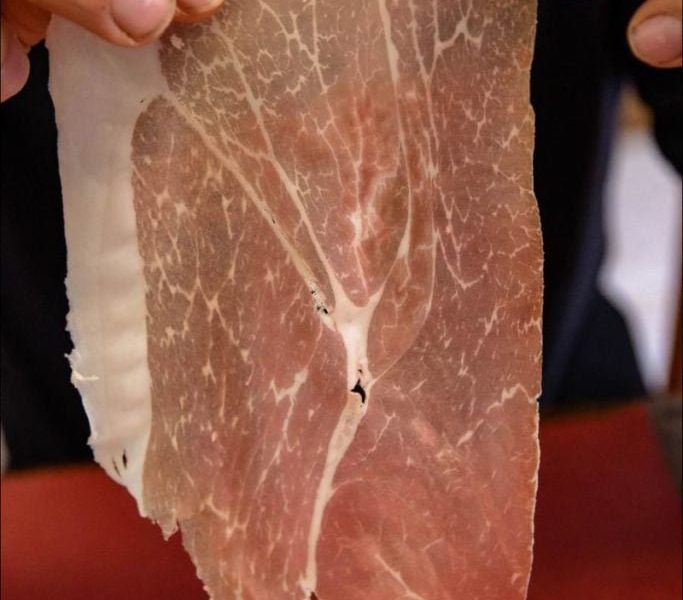If you’re wondering how to tell if prosciutto is bad, there are a few key signs to watch for. The exquisite flavor of prosciutto can quickly turn unpleasant if it’s past its prime. One surefire indicator is any noticeable discoloration on the meat, signaling spoilage. Additionally, a sour smell or slimy texture are definite red flags. Let’s delve into these warning signals to ensure you always enjoy your prosciutto at its best.
How to Tell if Prosciutto is Bad
Welcome, food enthusiasts! Today, we are going to dive into the delicious world of prosciutto and talk about how to tell if this delectable Italian cured meat has gone bad. Prosciutto is a beloved delicacy known for its rich flavor and delicate texture, but like any food, it can spoil if not stored or handled properly. In this article, we will explore the signs that indicate prosciutto has gone bad, as well as share tips on how to store and enjoy this savory treat safely. Let’s get started!
Understanding Prosciutto
Before we delve into how to tell if prosciutto is bad, let’s first understand what prosciutto is and how it is made. Prosciutto is a type of dry-cured ham that originates from Italy, specifically from regions like Parma and San Daniele. The process of making prosciutto involves curing the meat with salt and then air-drying it for an extended period, which can range from several months to several years.
Due to this curing process, prosciutto has a unique flavor profile that is both salty and savory, with a melt-in-your-mouth texture that is highly prized in Italian cuisine. However, because prosciutto is a cured meat, it is important to know how to properly handle and store it to prevent it from spoiling.
Signs that Prosciutto is Bad
Now, let’s talk about the telltale signs that your prosciutto may have gone bad. While prosciutto is a preserved meat that has a longer shelf life compared to fresh meat, it is still susceptible to spoilage if not stored correctly. Here are some indicators that your prosciutto has spoiled:
1. Foul Smell
One of the most obvious signs that prosciutto is bad is a foul or rancid smell. If your prosciutto emits a strong, unpleasant odor that is different from its usual aroma, it may be a sign that the meat has spoiled. Trust your sense of smell when determining the freshness of your prosciutto.
2. Slimy Texture
Another indicator of spoiled prosciutto is a slimy or sticky texture on the surface of the meat. Fresh prosciutto should have a dry, firm texture, so if you notice any sliminess or stickiness, it could be a sign of bacterial growth or mold, indicating that the prosciutto is no longer safe to eat.
3. Discoloration
Check the color of your prosciutto. While prosciutto typically has a deep pink or red hue, any unusual discoloration such as green or gray spots could be a sign of mold growth. Mold can be harmful if consumed, so it’s important to discard any prosciutto that shows signs of discoloration.
4. Off Taste
Lastly, if you taste your prosciutto and notice an off or sour flavor that is different from its usual savory taste, it is likely that the meat has spoiled. Trust your taste buds and avoid consuming prosciutto that tastes strange or unpleasant.
Proper Storage of Prosciutto
To ensure the longevity and freshness of your prosciutto, proper storage is key. Here are some tips on how to store prosciutto to prevent it from spoiling:
1. Refrigeration
Once you have opened your prosciutto, it is essential to store it in the refrigerator to prevent bacterial growth and maintain its quality. Wrap the prosciutto tightly in plastic wrap or aluminum foil to protect it from air and moisture, which can cause spoilage.
2. Store in a Cool, Dark Place
Before opening your prosciutto, store it in a cool, dark place away from direct sunlight and heat sources. Exposure to light and heat can accelerate the spoilage process, so keeping your prosciutto in a dark, cool environment will help maintain its freshness.
3. Use a Vacuum Sealer
If you want to extend the shelf life of your prosciutto, consider investing in a vacuum sealer. Vacuum-sealing removes air from the packaging, preventing oxidation and reducing the risk of spoilage. Vacuum-sealed prosciutto can last longer in the refrigerator compared to prosciutto stored in traditional packaging.
4. Check the Best-By Date
When purchasing prosciutto, always check the best-by date on the packaging to ensure you are consuming the meat within its recommended shelf life. While prosciutto can last for several weeks or even months when stored properly, it is important to be mindful of expiration dates to avoid consuming spoiled meat.
Enjoying Prosciutto Safely
Now that you know how to tell if prosciutto is bad and how to store it correctly, it’s time to enjoy this delicious cured meat safely. Whether you’re savoring thin slices of prosciutto on a charcuterie board, adding it to sandwiches or salads, or using it as a flavorful pizza topping, prosciutto can elevate any dish with its unique taste and texture.
Remember to always inspect your prosciutto for any signs of spoilage before consuming it, and follow proper storage guidelines to ensure its freshness. By practicing good food safety habits and being mindful of the quality of your prosciutto, you can enjoy this gourmet treat with peace of mind.
We hope this guide has been helpful in understanding how to tell if prosciutto is bad and how to enjoy it safely. Now, go ahead and indulge in the savory goodness of prosciutto, knowing that you can savor every bite without worry. Bon appétit!
How bad is prosciutto for you?
Frequently Asked Questions
How can I tell if prosciutto has gone bad?
To determine if prosciutto is spoiled, carefully inspect its appearance, smell, and texture. Look for any signs of discoloration, mold growth, or a slimy texture. Unpleasant odors, such as a strong sour or rancid smell, are also indicators that the prosciutto has gone bad.
What should I do if the prosciutto looks discolored?
If you notice any unusual discoloration on the prosciutto, such as dark spots or a change in color from pink to grayish or greenish hues, it is best to discard it immediately. Discoloration is a clear sign that the prosciutto has spoiled and should not be consumed.
Is it safe to eat prosciutto if it has mold on it?
If you spot mold on the prosciutto, it is advisable to discard the entire piece. While some types of mold are safe in certain foods, mold growth on prosciutto can indicate spoilage and the presence of harmful bacteria. Consuming moldy prosciutto can lead to foodborne illness.
Final Thoughts
In conclusion, checking the appearance, smell, and taste of prosciutto is crucial to determining if it has gone bad. Look out for any discoloration, unusual odors, or sliminess on the surface. If the prosciutto smells rancid or has an off-putting taste, it is best to discard it. Understanding these signs can help you enjoy this delicacy safely. Remember, knowing how to tell if prosciutto is bad can help prevent foodborne illnesses. Trust your senses and use your best judgment when in doubt.




